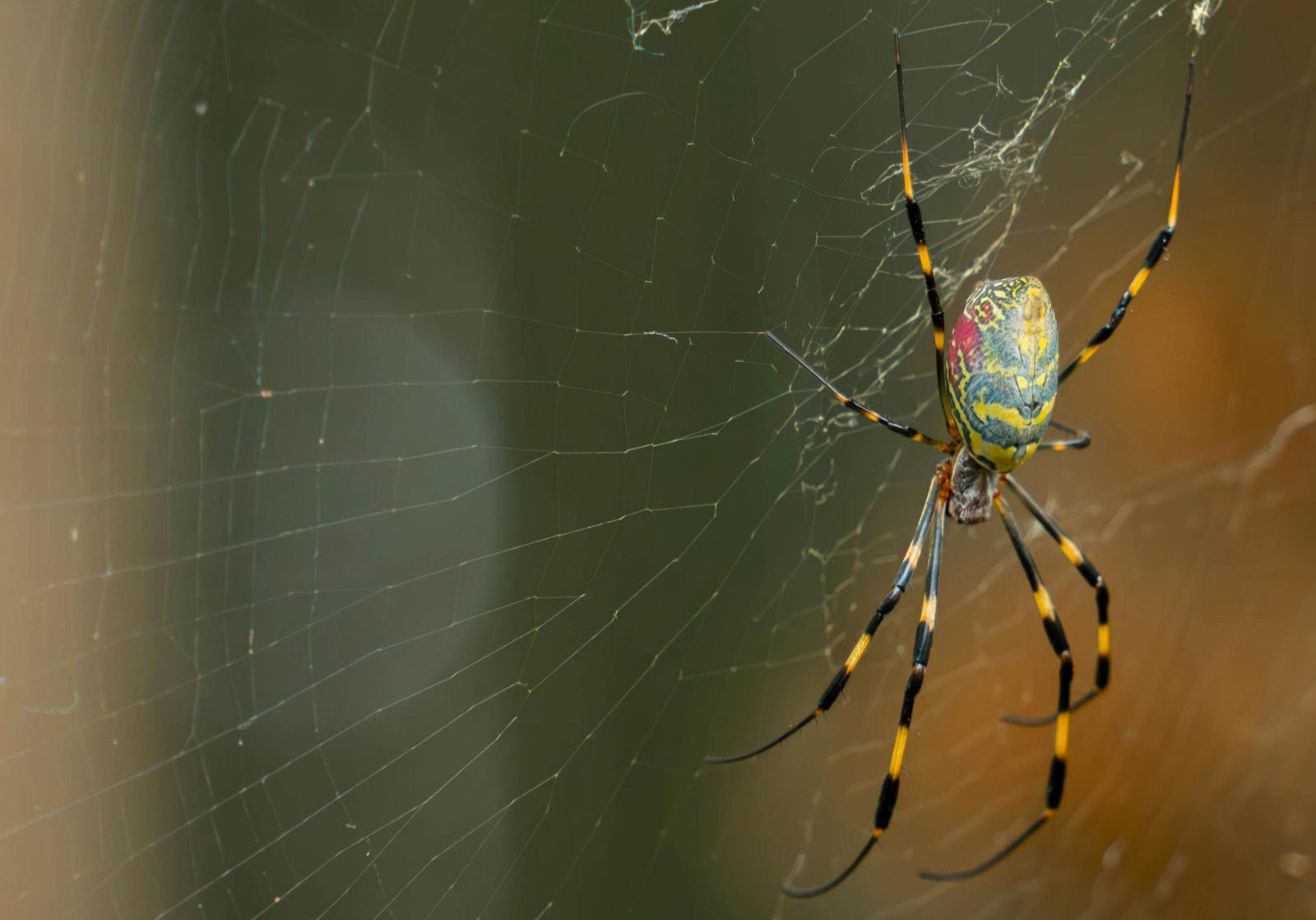 The large, brightly colored Joro spider has been sighted recently on social media in many more places than it has ever been seen in the United States, as exaggerated, misleading stories about the arachnid have gone viral. Yet they pose no threat, except perhaps to insects and to other spiders.
The large, brightly colored Joro spider has been sighted recently on social media in many more places than it has ever been seen in the United States, as exaggerated, misleading stories about the arachnid have gone viral. Yet they pose no threat, except perhaps to insects and to other spiders.
A Joro spider. Image courtesy Pexels.“Joro spiders will likely continue to spread in the U.S., but they aren’t the ‘flying venomous spider invasion’ that’s been sensationalized in the media,” said Virginia Tech entomologist Theresa Dellinger. Answering the questions below, she shared facts about this much maligned spider species.
Q: Where do Joro spiders come from?
“Joro spiders (Trichonephila clavata) are native to east Asia and can be found in Japan, Korea, China, Indochina, and Nepal. First reported in northern Georgia in 2014, they are an invasive species of spider that likely entered the U.S. on materials imported from east Asia.”
Q: Are they similar to other spider species already in the U.S.?
“Joro spiders are a species of orb weaver spider. Many different species of orb weavers are found in Virginia and the rest of the U.S. Some are large spiders, while others share striped patterns. Many people may be familiar with common garden orb weavers, which are also large spiders with long legs. The closely related golden silk orb, sometimes called the banana spider, found throughout the southeastern U.S., could easily be mistaken for the Joro spider. There’s also the orchard spider, a small spider with a striking black and white stripe pattern that could be confused with the Joro spider.
“As is true with many other spider species, baby Joro spiders use a process to get around called ‘ballooning,’ in which they release strands of web to catch the wind. The adult Joro spiders do not do this.”
Q: Where can Joro spiders be found?
“Since they were first found in Georgia, Joro spiders have spread into Tennessee, North Carolina, and South Carolina. They were found in West Virginia in 2022 and Maryland in 2023. Joro spiders have not been reported in Virginia to date, though it will not be a surprise if they are discovered in Virginia this year.”
Q: Is there any reason at all to worry about Joro spiders?
“They are not aggressive and seem to be quite shy despite their size. We are not aware of any medical concerns with Joro spiders in their home range in east Asia. If someone is allergic to spider bites, we would caution them against handling a Joro spider.”
Q: Are there any environmental benefits or drawbacks?
“Joro spiders spin large webs to capture their prey, and they feed on a wide range of insects, including some insect pests. As a non-native species, Joro spiders may compete with other native species of spiders, but the long-term impact in the U.S. has not been fully researched yet.
Q: Are there any precautions necessary when it comes to these spiders?
“They will not invade homes. There isn’t a need to spray yards as a preventative measure against the spiders. Besides, unnecessary yard treatments will harm pollinators, fireflies, and other beneficial insects. If Joro spiders become a nuisance around doorways, porches, or patios, they can be removed the same way as any other spider, using a broom or an aerosol insecticide spray.”
Virginia Tech




